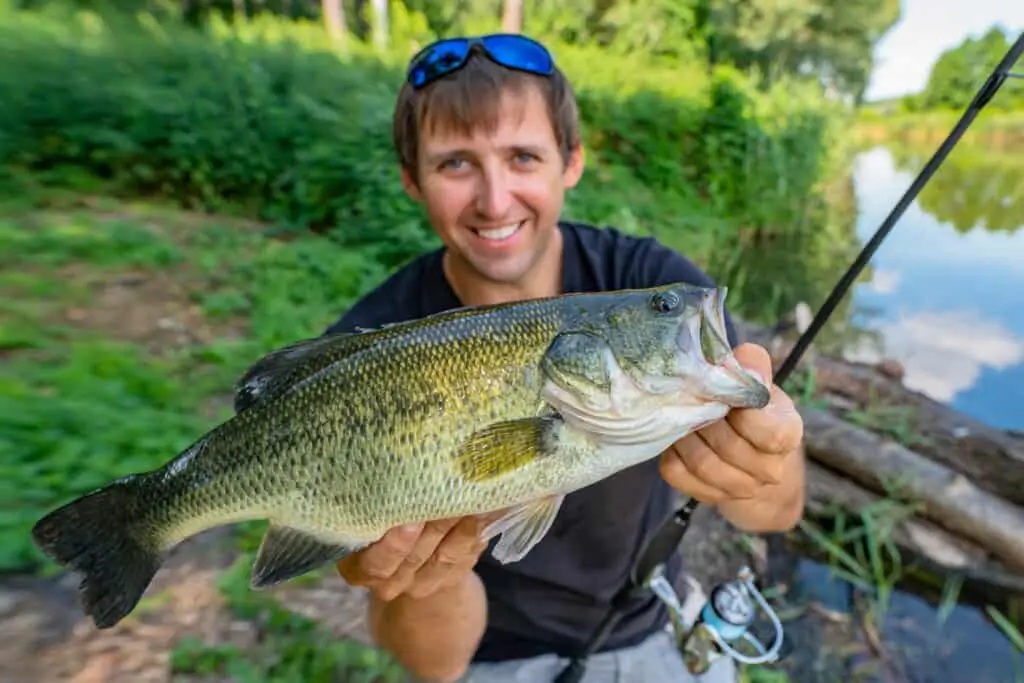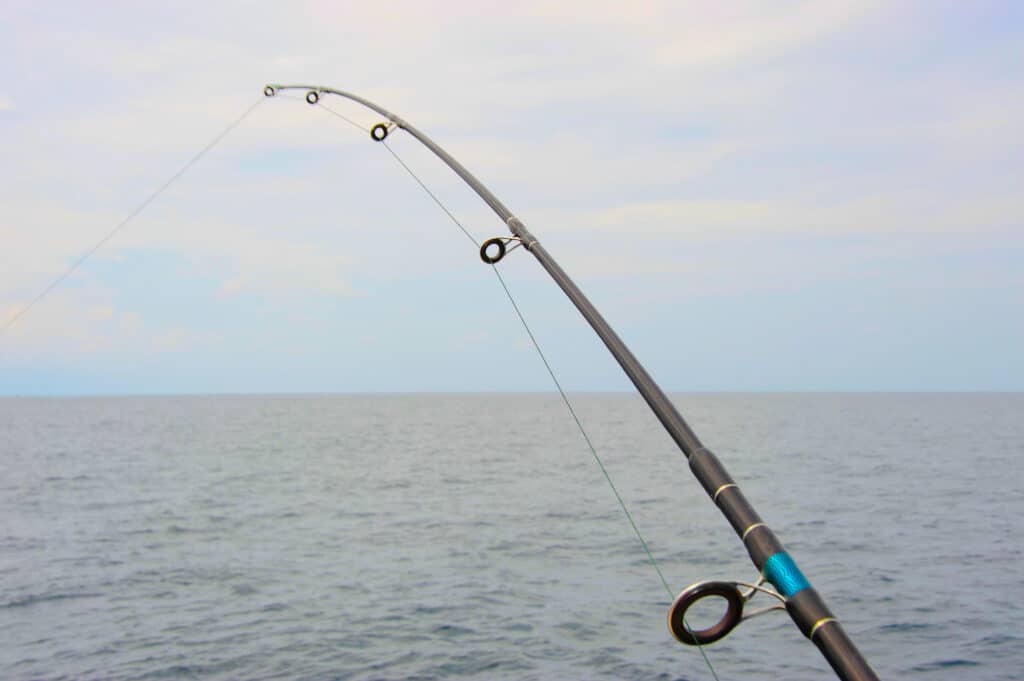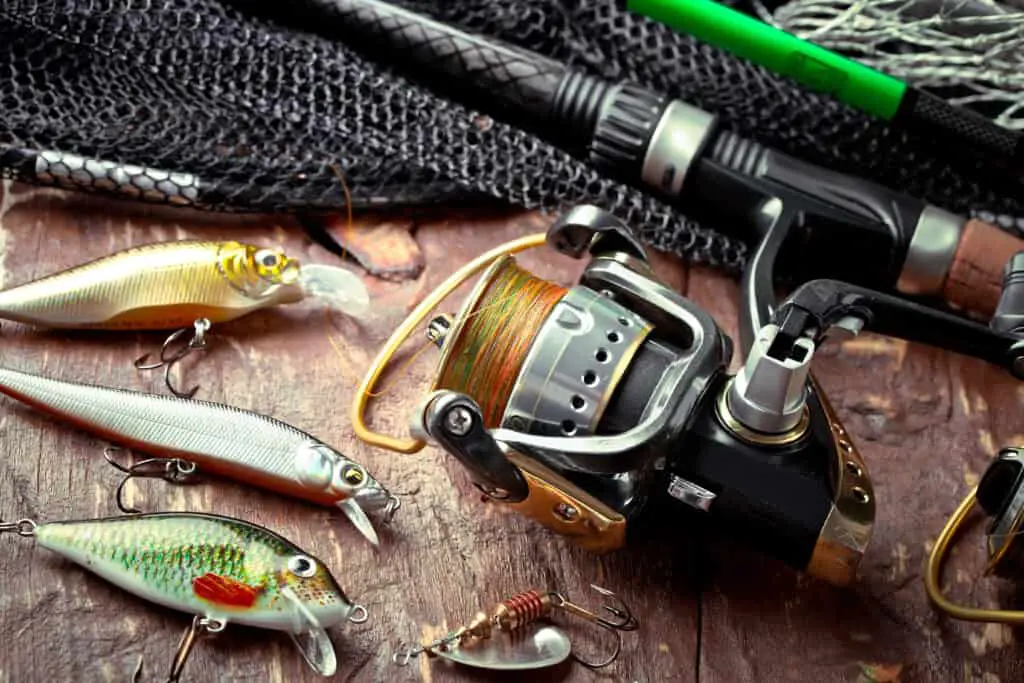Fishing is definitely one of humanity’s favorite sports and it’s been around forever. You do, however, have to know a few things to do it and do it well. One of those things is choosing the color of your fishing line because, believe it or not, it does matter!
Green is the best color for fishing lines in general. This is primarily because green is typically harder for fish to see, especially in murkier water. Most water that anglers fish in has at least a greenish tint to it. However, in clearer water, a color such as white might work better. For best results us clear line like fluorocarbon or monofilament for fish that are line shy.
Yes, it’s true, the color of your fishing line does make that much of a difference. Read on to learn how to correctly select a proper fishing line for your specific fishing conditions!
Different Colors for Different Species
As mentioned before, green is a pretty safe choice for most rivers and lakes because the water almost always has a greenish tint to them. Green lines should be virtually invisible in these types of water bodies. However, as mentioned before, clearer or bluer water might not have that same coloration. If this is the case, you should probably switch to a different color such as blue, yellow, or white.
Check out this article for more guidance on how to choose the right fishing line for each species and fishing technique: What Pound Test of Fishing Line to Use [Complete Guide]
Do I Need a Different Color for Different Species of Fish?
The truth is, whether or not fish can see your fishing line sometimes depends greatly on the water where the fish live and not necessarily the fish themselves. For example, you probably want to use a green line when fishing for trout because trout generally live in green-tinted waters. However, different species do have different types of vision, so the color does matter depending on the species you’re targeting. Let’s take a look at a few different fish species.
Trout
As mentioned before, trout often live in green-tinted water, so green fishing lines are often a safe choice. However, trout also have a difficult time perceiving lighter colors, so a transparent fishing line will work too. Transparent lines are an excellent choice, especially in bright lighting conditions.
Bass
Bass can see reds and oranges extremely well. Blues and transparent lines? Not so much. You will do best if you fish for bass in lighter conditions, when the sun is just rising, for example. In the morning light, you are most likely safe to use paler colors such as white or blue. If you are fishing in brighter sunlight, you may want to switch to green or even camo. This will make it particularly difficult for the fish to see your line.

Carp
Carp are definitely trickier fish to catch and choose colors for. Carp are extremely observant and alert fish, meaning they pay close attention to their surroundings. This might make it somewhat difficult for you to choose a line that will blend in with a carp’s environment.
You should be safe if you use dark browns and greens when fishing for carp. This will hopefully make it more difficult for the fish to notice that anything is out of the ordinary. Keep in mind that the color of the water is not always enough to match your line’s color. To fool a carp, you will need to make it blend with the background too.
Catfish
Now that we’ve discussed the most difficult fish to fool, let’s discuss the easiest. Catfish often make easy pickings simply because they are not choosy about what they eat, nor are they easily frightened. You can use a variety of different lines, colors, and fishing rods to catch catfish. As a matter of fact, you can use the brightest colors you can find if you wish. This will make it easy to watch exactly what’s happening with your line and hook. Many anglers favor a bright yellow line above all others when they’re going after catfish.
Murky Water vs. Clear Water
Water conditions do matter, as we’ve discussed above. Let’s explore a few different water conditions.
If you are doing your angling in fairly murky water, yellow is a good choice. The nice thing about yellow is that it’s very visible to the fisherman, which makes it easy to observe the goings-on below the water. Fish have a harder time spotting it from underneath. Unfortunately, yellow is not a great choice for fishing in clear water. It might even drive away any fish who are overly suspicious. However, if there are fish nearby who are hungry enough, they will not question a thing.
You may think that transparent lines can be used anywhere, but that is not typically true. Transparent lines are often designed to refract light the same way water does. This could be pretty attention-catching in dark and murky water. In clear water, however, they should blend in just perfectly.

When you are saltwater fishing, blue is almost always your best bet because it is pretty much the same color as seawater. The water will not usually be completely transparent, so forgo the white/transparent lines and go with blue. Of course, not all areas of the ocean are the same, so you may or may not have to play around with different colors to see what fits the water the best.
Finally, we have green. As mentioned before, green is a pretty versatile color that will work pretty well in more than one setting. It tends to work best in freshwater, which is almost always colored green. It will blend in pretty well with a lot of surroundings. If you are fishing in a particularly dark spot on the ocean, you might be able to use green because this color could camouflage fairly well in the darkness.
Red and orange lines can be used if you are concerned about being able to see your line. When light hits the water, red does tend to disappear, but this is not always the case. Be careful not to use a red line in an area where it will stick out too much. Even the hungriest fish may grow suspicious of it and refuse to bite. Carefully coordinate your colors and you’ll be just fine.

